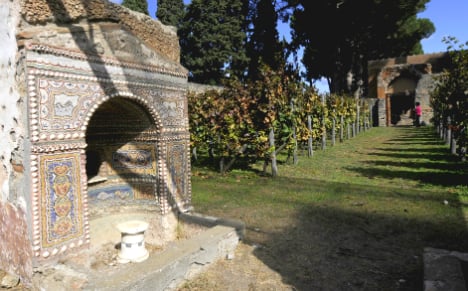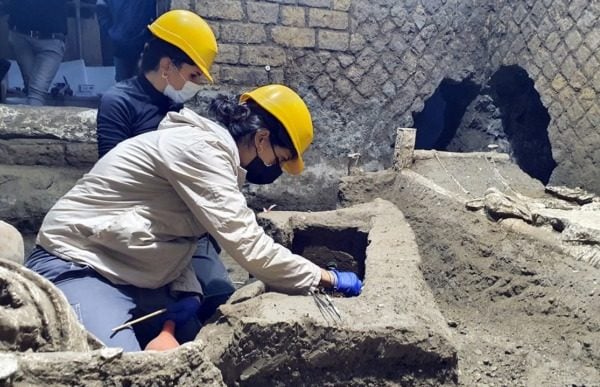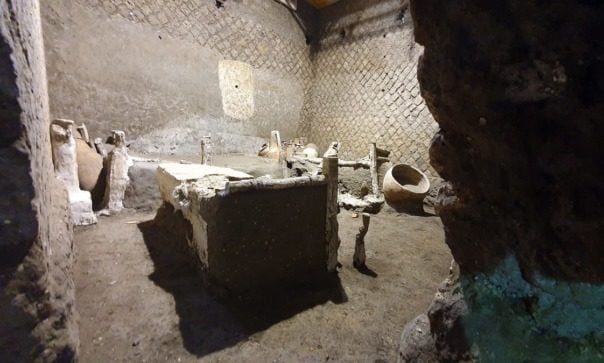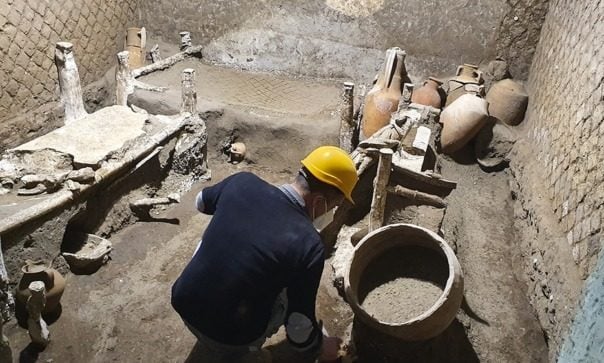The grapes are planted in exactly the same position, grown using identical techniques and grow from the same soil the city's wine-makers exploited until Vesuvius buried the city and its inhabitants in AD 79.
In the late 1800s, archaeologist Giuseppe Fiorelli first excavated some of the city's vineyards from beneath three metres of solid ash.
The digs turned up an almost perfect snapshot of ancient wine-growing – and thirteen petrified corpses, huddled against a wall.
Casts were made of the bodies, as well as the vines and the surviving segments of trellises on which they were growing.
But archaeologists didn't think to restore the vineyards of ancient Pompeii until the late 1980s.
When they did, they realized they didn't have a clue about wine-making, so they called in local winemaker Piero Mastrobeardino.
Together they set out to discover how the ancient Romans made wine, and which grapes and farming methods they used.
“The team looked at casts of vine roots made two centuries ago and consulted the surviving fragments of ancient farming texts,” Mastrobeardino told The Local. “We even looked at ancient frescoes to try to identify which grapes grew from Pompeii's soil.”
The team discovered that the type of grapes their ancestors were growing, called Piederosso Sciacinoso and Aglianico, were the same varieties still being grown on the slopes of Vesuvius by local farmers.
Aglianico is a variety which Piero's father is credited for saving from extinction after the Second World War.
Although the grape varieties were still the same, farming techniques had changed significantly since the time of the Romans.
“We use a number of methods to grow the fruit and carry out all of the work manually. One thing all our farming techniques have in common is that the grapes are grown at an extremely high density,” Mastrobeardino explained.
At first, experts doubted whether the grapes would grow at all at yields almost twice as high as those used today. However, once placed back in Pompeii's fertile soil, they flourished.

Roman remains litter the closely-grown vines. Photo: Mastrobeardino
Enologists discovered that the Romans' high-density growth technique is actually beneficial – the technique, now rediscovered, is spreading to the modern wine-making.
But not everything about ancient wine-making was better.
Mastrobeardino ferments the wine according to modern techniques and says Roman wine tasted foul.
“Pompeii wines were fermented in open-topped terracotta pots, called dolia. These were lined with pine resin filled with wine and buried deep into the earth. Asking a modern wine-lover to drink ancient wine would be foolish. The Romans knew their system was far from perfect but didn't have the technology to change it.”
Pompeii wines were considered among the best in the Empire, but were fiercely alcoholic and often diluted with honey, spices and even seawater to mask their rancid flavour.
Hygiene was also an issue.
Pliny the Elder, a Roman author, wrote that it was common to find drowned mice which had fallen into wine-filled dolia. Should this happen, he suggested the best course of action was to extract the marinated mouse and roast it straight away.
Some 1,500 bottles of Villa dei Misteri are made each year and can be found on the tables of exclusive restaurants in Tokyo, London and New York, Mastrobeardino said.
“It's more of a research project than a commercial enterprise, but it has come a long way. We have now replanted 15 of the city's ancient vineyards and are experimenting with diverse ancient farming techniques and grape blends.”
It might not be a profitable enterprise, but it doesn't come cheap either – a bottle will set you back around €77.






 Please whitelist us to continue reading.
Please whitelist us to continue reading.
Member comments